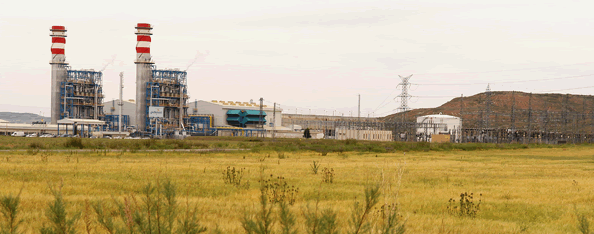In May 2010, the US government agency Energy Information Administration (EIA) released the study’s most significant data (International Energy Outlook 2010), published annually, on the worldwide energy demand’s long-term prospects. Prominent findings from this study include:
- The price of light crude oil in the United States is expected to rise from $79 per barrel in 2010 to $108 per barrel by 2020 and $133 per barrel by 2035.
- Worldwide marketed energy consumption will increase by 49% between 2007 and 2035, based on the assumption that the countries will resume the economic growth rates projected prior to the recession. The strong long-term growth in gross domestic product (GDP) among emerging non-OECD economies will prompt an accelerated increase in the demand for energy.
- The total energy demand from non-OECD countries will increase by 84%, as opposed to the 14% growth shown by OECD countries.

Predictions indicate conventional fuels will continue to provide a great deal of the energy used around the world. While liquid fuels will remain the number one source of energy, their share in worldwide energy consumption will fall from 35% in 2007 to 30% by 2035
- The worldwide use of liquid fuels and oil derivatives will climb to 103.9 million barrels per day by 2030 and 110.6 million barrels per day by 2035. On a global scale, liquid consumption in the residential sector will remain stable, while the industrial sector will display modest growth in this regard, as electrical energy declines.
- The hike in estimated shale gas resources has helped increase the US’s total natural gas reserves by almost 50% over the past decade. Shale gas is expected to constitute 26% of the United States’ natural gas production by 2035.
- International natural gas trade, albeit via gas pipelines or in the form of liquefied natural gas (LNG), will augment in the future. This predicted increase in LNG supply will hail, in large part, from the Middle East and Australia, where new liquefaction projects are expected to be launched throughout the current decade. Estimates predict the world’s liquefaction capacity to multiply by 2.4.
- Worldwide coal consumption will increase at a rate of 1.6% per year. Asia will be responsible for 95% of the world’s increased coal consumption between 2007 and 2035.
Long-term prospects paint a brighter future for electricity generation from both nuclear energy and renewable energy sources, thanks to support from government incentives and the elevated price of fossil fuels.
- Between 2007 and 2035, the global use of renewable energy in electricity generation will increase by an average of 3.0% each year, reaching 23% in 2035.
- From among renewable energy sources, estimates predict that 54% of the increase will come from hydroelectric sources, with 26% attributable to wind energy. Barring these two sources, the overall consensus is that most renewable energy generation technologies will be unable to compete economically with fossil fuels during the period in question, outside a limited number of market niches.
- Generating electricity with nuclear energy will increase 73% over this period. The predicted increase in fossil fuel prices means that nuclear energy can compete economically with coal, natural gas and liquid fuel generation, despite the relatively high costs of nuclear power stations.
Carbon dioxide emissions associated with energy consumption will climb from 29.7 billion metric tonnes in 2007 to 33.8 billion by 2020, and 42.4 billion metric tonnes by 2035, a 43% increase over the period in question. With strong economic growth and an acute dependence on fossil fuels expected for the majority of non-OECD economies, and assuming current policies remain in effect, most of the predicted increase in carbon dioxide emissions will come from developing non-OECD nations.
On 16 December 2010, the same US Government Agency (EIA) released its annual Energy Outlook 2011 (AEO2011) report on the US market. It presents updated US energy market forecasts for the period until 2035. These reference case forecasts do not include the effect possible policies could have in the future, as they have not yet become law.
In 2010, the International Energy Agency (IEA) played a highly active role in the publication of research studies. We hereby indicate three such studies:
- Medium Term Oil and Gas Markets 2010.
- Energy Technology Perspectives 2010 and
- World Energy Outlook 2010.
In the oil and gas markets, the IEA sees a dichotomy between OECD-member countries and non-OECD nations, with China, India and the Middle East showing sizeable growth, as opposed to weaker demand in other places, particularly in Europe.
The report indicates that oil supply prospects have displayed a marked improvement over last year. With respect to natural gas markets, the new report affirms a return to 2008’s demand levels for 2012, yet with significant regional variation. China is a region that has shown sizeable growth in terms of gas and is expected to double demand and reach 140 bcm by 2015, although this forecast may prove conservative.
As it does every year, the IEA published its report on long-term prospects. World Energy Outlook 2010, released in October 2010, covers the period until 2035. The study’s main forecasts include:
- The IEA Report’s central scenario, the New Policies Scenario, factors in implemented policies and all plans which have been announced around the world to reduce greenhouse gases and hydrocarbon consumption subsidies, for example.
- According to the New Policies Scenario, the worldwide energy demand will intensify by 38% between 2008 (start date with real data) and 2035, at an annual cumulative growth rate of 1.2%. Over the past 27 years, the worldwide energy demand grew at a rate of 2%. In the 450 Scenario (study published by the IEA in 2009, outlining the steps needed to ensure earth’s temperature rises by less than two degrees, limiting the concentration of greenhouse gases to 450 parts per million of CO2 equivalent), the demand’s growth rate was set at 0.7%.
- Conventional energy will provide half the world’s additional demand in the period until 2035. Saving energy, penalties for consuming coal and price increases will be fundamental in restricting the growth of the three fossil fuels.
- Non-OECD member countries will consume 93% of the projected increase in the global energy demand. China will be responsible for 36% of the world’s heightened energy consumption, with India weighing in at 18%. Despite the fact OECD countries will display little growth, in 2035, the US will continue to occupy the 2nd spot (it was ousted from the top position by China in 2009) in the list of largest consumers, followed by India. Lest we forget that, between 2000 and 2008, China’s increase in energy consumption was four times higher than in the previous decade.
- Non-conventional oil is ready to play a decisive role in the future. Forecasts predict production will increase from 2.3 million barrels per day to 9.5 mb/d by 2035.
- Natural gas will play a central role in covering the world’s energy needs over the analysed period.
This study is based on an economic scenario in which the EU develops the energy system using current guidelines and policies. It includes current population and economic development trends. It also includes the policies adopted between April and December 2009, therein assuming, for example, national action plan targets under the renewable energy Directive 2009/28/EC.
The study’s primary conclusions emphasise renewable energy’s heightened role in electricity generation and a decline in conventional energy sources. From the various renewable sources, while hydroelectric energy’s share will decrease, wind (inland and offshore) and photovoltaic solar power will have shown the largest share increase. Percentage-wise, nuclear energy’s role will decrease, while its figures remain virtually untouched in absolute terms.
- Coal will produce 21.1% of generated electricity in 2030. Natural gas will generate 17.7% in 2030. Together, solar and wind power will have a 19.3% share in 2030.
- With respect to total primary energy consumption in 2030, coal will constitute 14.4%, oil 31.9% and natural gas 22.4%. These three energy sources will not only lose market share, their share in the global energy mix will decline in absolute terms. Renewable energy sources would rise from 8.6% in 2010 to 17.4% by 2030.
- From fuels used to generate electricity, natural gas would generate 24% in 2030. In absolute figures, natural gas would not reach 2010’s figures until 2025, with a slight decline over this 15-year period; a decrease that would return in the final five years.
- Renewable energy sources would rise to 25.2% by 2020 and 32.6% by 2030.


